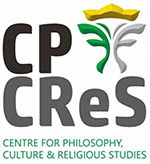Negara dan Pasar: Globalisasi dan Dua Dasawarsa Seni Rupa Kontemporer Indonesia
DOI:
https://doi.org/10.26593/mel.v27i2.304.171-186Abstract
This paper analyses the changes in production’s pattens, distributions and consumptions of Indonesian contemporary art by way of comparing the regional and international art exhibitions participated by Indonesia during the last two decades (1990-2010). There were two dominant and different patterns in each decade. The development during the 90s showed the dominance of the state's role, notably Japan and Australia, through large-scale exhibitions with the support of government funding and infrastructure. However, Indonesian contemporary art later became more prominent among the non-government initiatives, especially through the market activities at the auction houses and art fair in Asia. By referring to cultural theories and globalisation process, this paper wants to show how the development of Indonesian contemporary art might have been related to the changes in the constellation of geo-political and geo-economic developments in Asia Pacific which lead to the triumph of neoliberalism. The growing popularity of international art fair involving commodities and capital in large quantities can be seen as an evidence of how the fine arts are increasingly following the pattern of trade and free markets. As an institution that previously was doing the 'validation' of art, public museum now 'competes' with the free market fundamentalism loaded with some elite’s interests.
Keywords:
*globalisation, *Indonesian contemporary art, *postmodernism, *geopolitics, *geo-economics, *artmarket, *neoliberalism, *regionalism, *art fair, *sociopolitical art
Downloads
Published
Issue
Section
License
MELINTAS applies the Creative Commons Attribution (CC BY NC) license to articles and other works we publish. If you submit your paper for publication by MELINTAS, you agree to have the CC BY NC license applied to your work.


